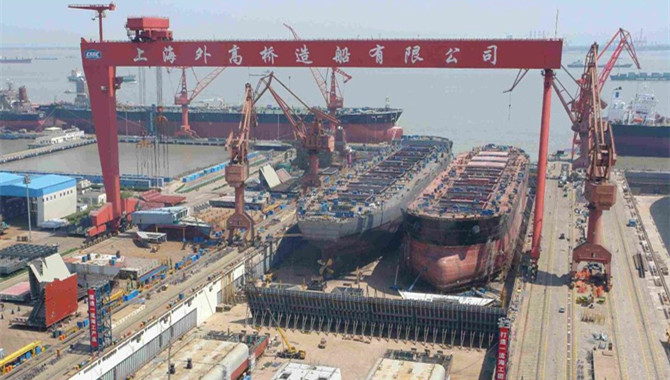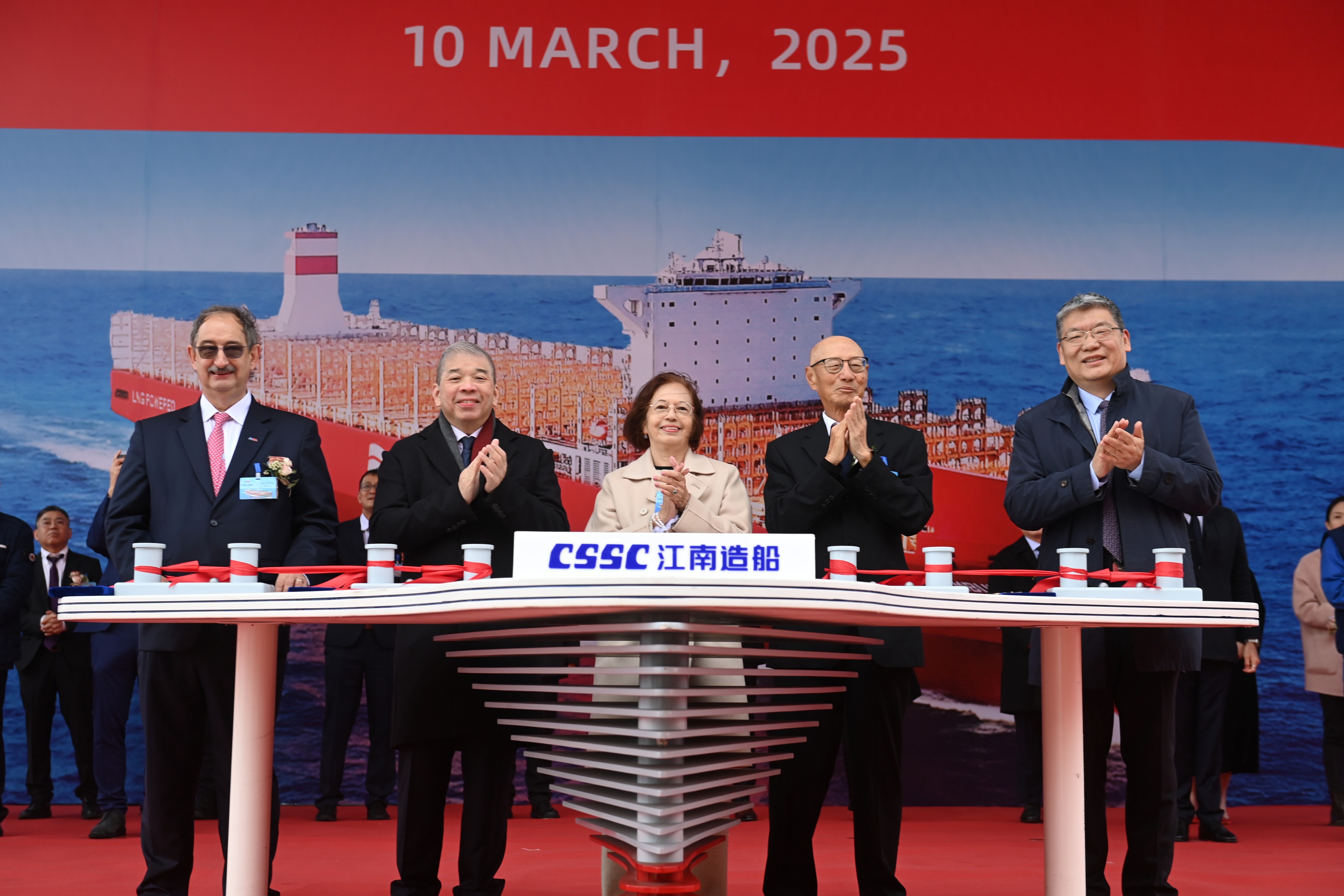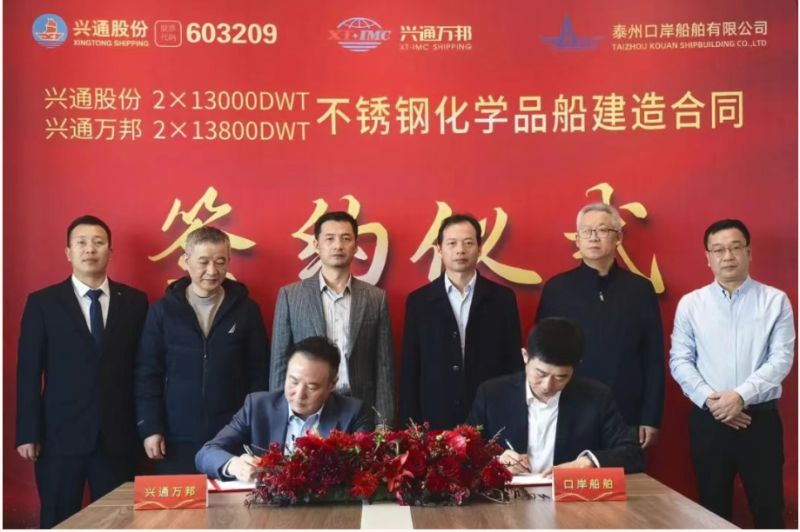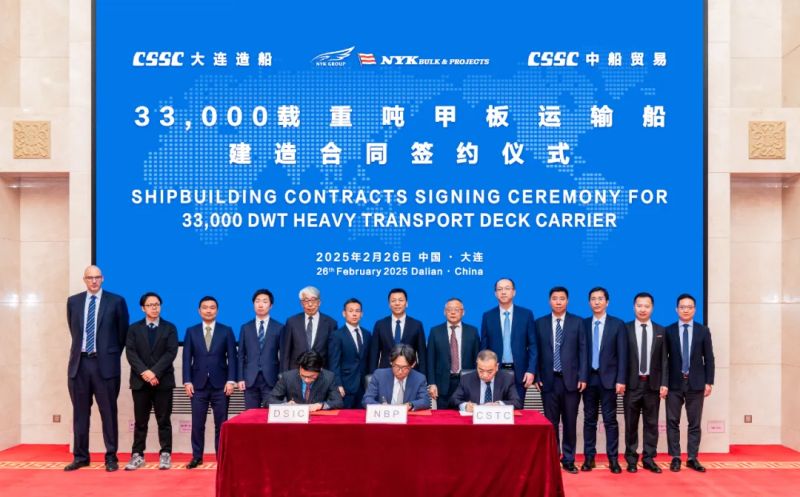
Nation on cusp of intensifying efforts in domestically made high-end vessels
The breakthroughs that Shanghai-based shipbuilders made in December indicate the country's growing capacity for producing high-end vessels as it strives to become a global shipbuilding power, experts said.
Three shipyards in Shanghai recently announced successful developments in their respective areas, namely China's first domestically made cruise ship being put in the water, the world's largest B-tank very large ethane carrier (VLEC) being delivered, and the undocking of the world's largest container ship.
The new achievements displayed Chinese shipbuilders' capabilities in shipbuilding technologies, market scale, industrial chains as well as shipbuilding-related supply chains, said Lin Guolong, director of Shanghai Maritime University's Logistics Research Center.
"Despite being a world leader in building vessels, China used to build comparatively less technology-intensive ships. Now, China is on course to become a shipbuilding power, as more high-end vessels are being built with more technology and innovation inputs," Lin said.
China's first domestically made cruise ship was placed in the water beside Shanghai Waigaoqiao Shipbuilding Co Ltd on Dec 17, which means about 55 percent of its total construction workload has been completed.
Due for delivery in September 2023, the 135,500-gross-ton Vista-class vessel officially entered the second-half phase of interior decoration and system debugging.
"Marine cruise shipbuilding is always challenging, and it was particularly challenging amid the COVID-19 pandemic," said Arnold Donald, CEO of Carnival Corp, during a video speech at the floating ceremony.
He believed that despite all the obstacles, Shanghai Waigaoqiao Shipbuilding's continuous progress in construction work will ensure timely delivery of the vessel.
Its steel sheet cutting ceremony took place over two years ago.
At the floating stage, the 323.6-meter-long and 37.2-meter-wide cruise ship's elimination of remaining stress in the hull structure will help technicians collect data as they measure and verify the vessel to ensure its structural safety and stability.
However, the most challenging part for the Chinese cruise shipbuilder is just beginning.
Experts said building a cruise ship is "an unprecedented challenge" for China's shipbuilding industry in terms of its special structure, craftsmanship complexity, construction difficulties and strict requirements for global supply chain collaboration.
"The cruise ship is a floating modern city, which contains everything in life one can imagine, ranging from living, eating, to entertainment and shopping," Lin said.
Therefore, every single element of urban life should be taken into the system management of the cruise ship, be it technology, culture or arts, and they should all follow global standards, Lin added.
By its delivery, the cruise ship will be capable of hosting a maximum of 5,246 guests with its 2,125 guest rooms ranging from standard rooms to presidential suites, and will enable passengers to enjoy colorful journeys across the seven seas with plenty of on-board entertainment options as well.
On Dec 28, the world's first B-tank VLEC-Pacific Ineos Belstaff-was officially delivered, which is regarded as a new technological breakthrough by Jiangnan Shipyard.
The 230-meter-long and 36.6-meter-wide vessel was researched, developed and designed independently by Jiangnan Shipyard using the latest market trend of carbon neutrality. And the VLEC vessel features four B-tanks, which allows it to obtain a total capacity of 99,000 cubic meters of ethane.
Hu Keyi is chief expert at China State Shipbuilding Corp-the world's largest shipbuilder-and also director of the science and technology committee of Jiangnan Shipyard, a unit of the CSSC. He said Btanks are regarded as the most vital part of a VLEC, and the Type B cargo containment system "BrilliancE "was also fully developed by Jiangnan Shipyard.
Compared with the construction of Type-A very large gas carriers (VLGCs), from which Jiangnan Shipyard has garnered rich experience, B-tanks demand higher standards and requirements in terms of processing methodology, quality control, technical standards, precision of assembling and welding, deformation control and installation, said Zhou Qinghua, deputy chief technologist of the 99,000-cubic-meter VLEC.
The shipyard is currently in the process of building another three 99,000-cubic-meter VLECs, scheduled for delivery this year.
Jiangnan Shipyard is the only Chinese shipbuilder capable of researching, developing, designing and constructing the entire series of liquefied gas vessels, from start to finish, according to experts.
On Dec 29, the world's largest container ship with a capacity of 24,000 TEUs (twenty-foot equivalent units) was undocked at the shipyard of its builder Hudong-Zhonghua Shipbuilding (Group) Co Ltd in Shanghai, which marks another major achievement reached in China's shipbuilding industry in building ultra large container vessels.
The ship, designed independently by Hudong-Zhonghua, is the first of six 24,000-TEU ultra large container ships ordered by Evergreen Group.
Each is 399.99-meter long and 61.5-meter wide, and they are the world's largest container ships with the greatest capacity.
Equipped with desulfuration units, the container ship utilizes state-of-the-art technologies to ensure green sustainability and energy efficiency so as to make the vessel move swiftly and efficiently, with all its performance indicators meeting international advanced standards, Lin said.
Having its focus on building high value-added container ships, Hudong-Zhonghua currently has 19 large-sized container ships under construction, and in 2021 alone, it received orders for 13 units.
As the nation's leader in designing and building large container vessels, Hudong-Zhonghua has so far constructed more than 60 large-scale container ships (above 8,000 TEUs) for global shipowners. Among them, five represented the world's first batch of ultra large liquefied natural gas-powered 23,000-TEU container ships.
Zhou Dequan, director of Shanghai International Shipping Institute's domestic shipping research office, said 2021 was the best year for the global shipping industry since the 2008 global financial crisis.
"This is particularly so for the container ship market, which reached record highs in terms of freight and revenue, and the dry bulk cargo sector, which witnessed the greatest year in the past decade," Zhou said.
Zhou expects the container ship market will maintain forward momentum in 2022, dry bulk cargo will face a mild market adjustment and oil tankers may experience an uptick after the downward correction in 2021.
China took the lead in global shipbuilding by accounting for around half of new ship orders worldwide in 2021, or 965 vessels classed as 22.8 million compensated gross tonnage (CGT), according to British shipping services provider Clarkson.
In 2021, a total of 1,846 such new ship orders were placed across the world, with South Korea accounting for 38 percent, ranking second only to China.
Lin said despite the encouraging progress China's shipbuilding sector has made, there remain challenges for China to overcome before becoming a truly global shipbuilding power.
"Chinese shipyards need to restructure their industrial chain, work hard on their core technologies, pay more attention to design, production and craftsmanship, as well as strengthen their capability in the resilience, flexibility and elasticity of supply chain management," Lin said.
Source: WANG YING, Chinadaily
The opinions expressed herein are the author's and not necessarily those of The Xinde Marine News.
Please Contact Us at:
media@xindemarine.com


 World’s Largest Pulp Carrier Delivered 213 Days
World’s Largest Pulp Carrier Delivered 213 Days  Danelec Expands High-Frequency Data Installed-Base
Danelec Expands High-Frequency Data Installed-Base  World’s Largest LNG Dual-Fuel Container Ship Triu
World’s Largest LNG Dual-Fuel Container Ship Triu  PIL advances fleet renewal with the naming of its f
PIL advances fleet renewal with the naming of its f  Xing Tong Shipping Orders four 13,000 DWT stainless
Xing Tong Shipping Orders four 13,000 DWT stainless  Breaking New Ground in Maritime Excellence: DSIC &a
Breaking New Ground in Maritime Excellence: DSIC &a